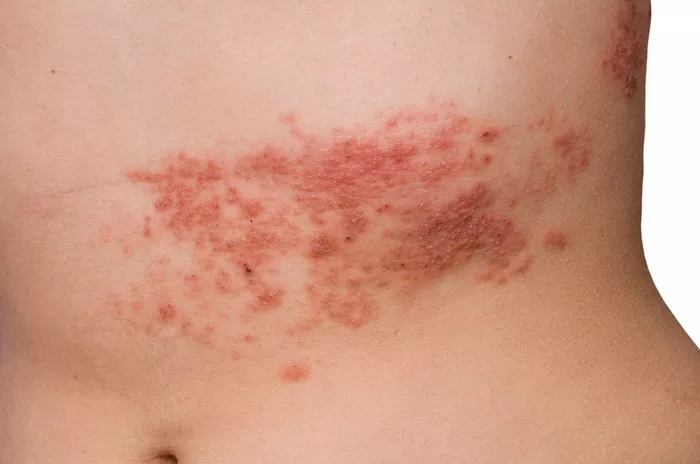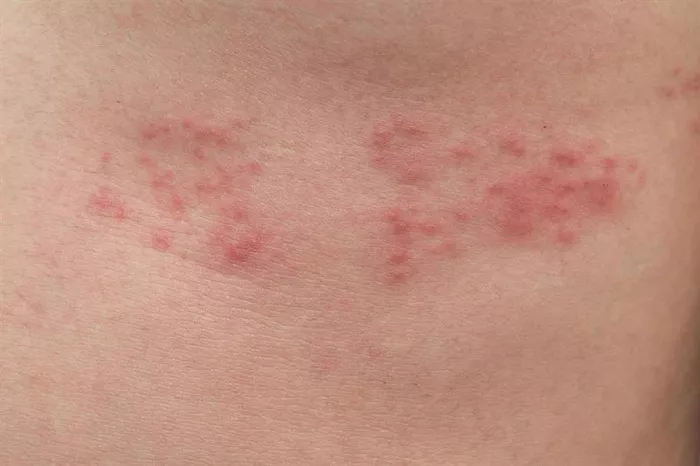Shingles, medically termed herpes zoster, is a viral infection characterized by a painful rash. While often perceived as a mere annoyance, the reality of shingles is far more complex. To grasp the nature of this ailment, one must delve into the intricate world of virology, specifically the varicella-zoster virus (VZV), which lies at the heart of this condition.
Unveiling the Varicella-Zoster Virus (VZV)
The varicella-zoster virus belongs to the herpesvirus family, a group of enveloped, double-stranded DNA viruses known for their ability to establish lifelong infections in their hosts. VZV specifically manifests in two distinct clinical forms: chickenpox (varicella) and shingles (herpes zoster).
1. The Initial Encounter: Varicella (Chickenpox)
Varicella, commonly known as chickenpox, typically marks one’s first encounter with the varicella-zoster virus. This phase of infection often occurs during childhood and is characterized by a generalized vesicular rash, accompanied by fever and malaise. The virus spreads through respiratory droplets or direct contact with the fluid from the blisters of an infected individual. Following primary infection, VZV establishes latency within sensory ganglia, where it remains dormant until reactivation occurs.
2. The Reawakening: Herpes Zoster (Shingles)
Shingles, the reactivation of VZV, emerges later in life as a consequence of waning immunity or immunosuppression. This reactivation typically presents as a localized rash along the distribution of affected sensory nerves, often accompanied by severe pain or itching. The exact triggers for reactivation remain elusive, though age, stress, and compromised immunity are known contributing factors.
Understanding the Pathogenesis of Shingles
The pathogenesis of shingles revolves around the intricate interplay between the varicella-zoster virus and the host immune system. Upon reactivation, VZV travels along sensory nerve fibers to the skin, where it induces inflammation and disrupts normal cellular function. The characteristic rash of shingles arises from the virus’s ability to replicate within epidermal cells, leading to the formation of fluid-filled vesicles and subsequent tissue damage.
Immune Response and Shingles
The immune response to VZV reactivation plays a pivotal role in the clinical manifestations of shingles. While an intact immune system can often contain viral spread and limit disease severity, deficiencies or dysregulation in immune function can exacerbate symptoms and prolong recovery. The inflammatory milieu created by the immune response contributes to the characteristic pain and discomfort associated with shingles.
Clinical Presentation and Complications
Shingles typically presents as a painful rash with unilateral distribution along a specific dermatomal pattern, corresponding to the affected sensory nerves. However, the clinical presentation can vary widely, with some individuals experiencing mild symptoms while others endure severe pain and complications. Common complications of shingles include postherpetic neuralgia, bacterial superinfection of skin lesions, and involvement of other organs such as the eyes (herpes zoster ophthalmicus).
Diagnosis and Management
Diagnosing shingles primarily relies on clinical evaluation, taking into account the characteristic rash pattern and associated symptoms. Laboratory tests, such as viral culture or polymerase chain reaction (PCR), may be employed to confirm the presence of VZV in cases with atypical presentations or diagnostic uncertainty.
Management Strategies
The management of shingles encompasses both antiviral therapy and supportive care aimed at alleviating symptoms and preventing complications. Antiviral medications, such as acyclovir or valacyclovir, are commonly prescribed to shorten the duration of the illness and reduce the risk of complications, particularly when initiated early in the course of the disease. Additionally, analgesics, topical agents, and anticonvulsants may be utilized to manage pain and discomfort associated with shingles.
Prevention Through Vaccination
Vaccination represents a cornerstone in the prevention of shingles and its complications. The introduction of the varicella vaccine for primary prevention of chickenpox has significantly reduced the incidence of varicella infection and consequently lowered the burden of shingles in vaccinated populations. Furthermore, the availability of the herpes zoster vaccine has proven effective in reducing the risk of shingles and its associated complications in older adults.
Conclusion
Shingles, caused by the reactivation of the varicella-zoster virus, presents a significant public health concern due to its potential for severe pain, complications, and long-term sequelae. Understanding the virology, pathogenesis, clinical presentation, and management of shingles is crucial for healthcare providers in delivering optimal care to affected individuals. Through continued research, vaccination efforts, and public awareness initiatives, strides can be made in mitigating the impact of shingles on global health.

























